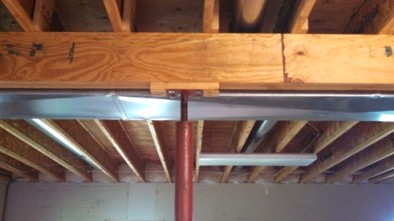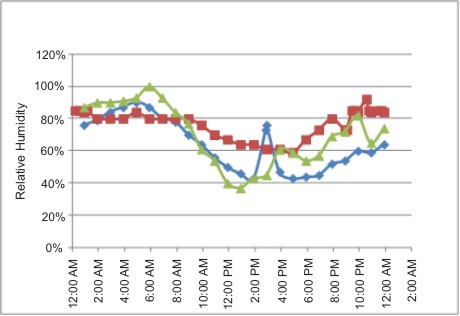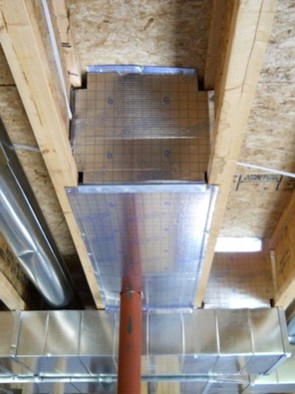
Now that winter, followed by a couple months of flooding rains have passed, at least for a few days, summer is here, and this brings about some energy saving tips, rumors, bologna, and truths about summertime energy use around the house.

First, allow me to destroy the inappropriate and overused term “humidity”. When someone complains about 90% humidity, it would be entirely wrong in most instances. For demonstration, see the chart nearby. Each curve represents relative humidity (RH) over a 24 hour period.
Which represented day is more comfortable from a RH perspective? The correct answer – I can’t tell because RH is a worthless metric. The blue curve shows RH on July 4, 2013; the red curve is for February 2, 2013; and the green is for July 23, 2012 – all in La Crosse WI. The high temperatures on these days were 84F, 4F, and 98F, respectively. Preferences for the best weather are up to the reader, but clearly, RH means nothing.
Relative humidity and temperature are like bond prices and interest rates; they move in opposite directions, all else equal. Therefore, as the temperature rises, the RH falls, over the short term – morning to mid-afternoon. E.g. on the uber hot and “humid” 98F day, the RH is actually lower than the 4F day.
East of the Rockies, summer outdoor comfort can be quantified solely by dew point, which is a true measure of moisture in the air. Dew point is the temperature at which invisible water vapor in the air condenses on cooler surfaces, like a glass of lemonade.
In general, the overnight temperature will approach the dew point temperature. If the dew point is a comfortable 58F, the overnight temperature may cool to 60F. This is good open-the-windows weather by most folks’ standards.
As LEED (Leadership in Energy and Environmental Design) promotes, I would say most folks enjoy connection to outdoors and what’s better than fresh air, crickets, and birds chirping? At our house, the windows are open and the AC is off until the dewpoint rises to roughly 65F or higher.
Summertime Energy Use Tip #1: for home free cooling, watch the dew point, available on any decent weather website.
I’ve heard many times that “humidity” makes milk sour sooner. No. Milk sours because the refrigerator is warmer because the high moisture content of the air adds cooling load to the refrigerator. Cooling capacity decreases. The compressor runs more. The defrost cycles more frequently, compounding the problem. What to do? 1a don’t open the door so often; 1b don’t hold the door open and watch the contents; 1c keep it full of something non perishable (I prefer beer), so when the door must be opened, less moisture infiltrates. Be careful not to disturb the circulation. Stuffing Aunt Velma’s afghans in the fridge to do the job is not advised.
Summertime Energy Use Tip #2: take advantage of the chimney effect for natural ventilation/cooling. During cool evenings when there is little or no wind, cool air enters at ground level, extracts heat from the home, rises, and exits the second floor. Bedrooms on the second floor are in a losing position for this. For best results, I like camping under an open window on the first floor with cool fresh air dumping on me all night. Awesome!

Summertime Energy Use Tip #3: A few weeks back I wrote about Duct Leakage. Home cooling systems aren’t designed – they are “rule of thumbed”. This includes terrible ductwork practices like lots of hard right turns that generate excessive flow resistance – the results on cooling efficiency are similar to those caused by dirty filters.
Moreover, newish home systems use cheap return ducts consisting of space between joists and foil-backed cardboard as shown. Why have return ducts at all? Don’t worry, the air will find its way back to the furnace (air handler) as it does in our office at 400 Main Street in La Crosse.
I removed a couple panels close to my air handler on the return side to let it pull cool air from the basement. This provides some “free cooling”, but also better dehumidifies the basement by pulling more warm air at lower RH into the basement and by running it through the cooling coil where moisture is condensed and sent down the drain.
Lastly, the dehumidifier. In my experience, these things are pigs. The control is lousy and unreliable. I have mine on a timer for equally lousy control, but hey, at least the lousy control minimizes energy use.

Applied to homes, dehumidifiers are always located in basements because that is the coolest space with the highest RH (lower temperature ► higher RH). Relative humidity greater than 60% in a basement is clammy and may start to grow things that smell foul. Tip #4: when the central AC is running, I pull the plug on the dehumidifier.
BTW, see that pipe shooting through the foil-faced cardboard above? That would be a support column, which normally supports a beam that runs perpendicular to the floor joists to support the floor. It would seem someone needs to be fired for this job. Maybe the column was too long and they improvised to make it fit. I’d fire him twice for that. It should be built as shown below in my basement.
And I would fire that guy the third time for using OSB for floor base. The “O” is for “oriented” to support shear forces as wall sheathing material – NOT weight bearing forces as a floor does. The above photo is a perfect example of cheap, crappy, and wrong.






Where can I find this non-perishable beer?